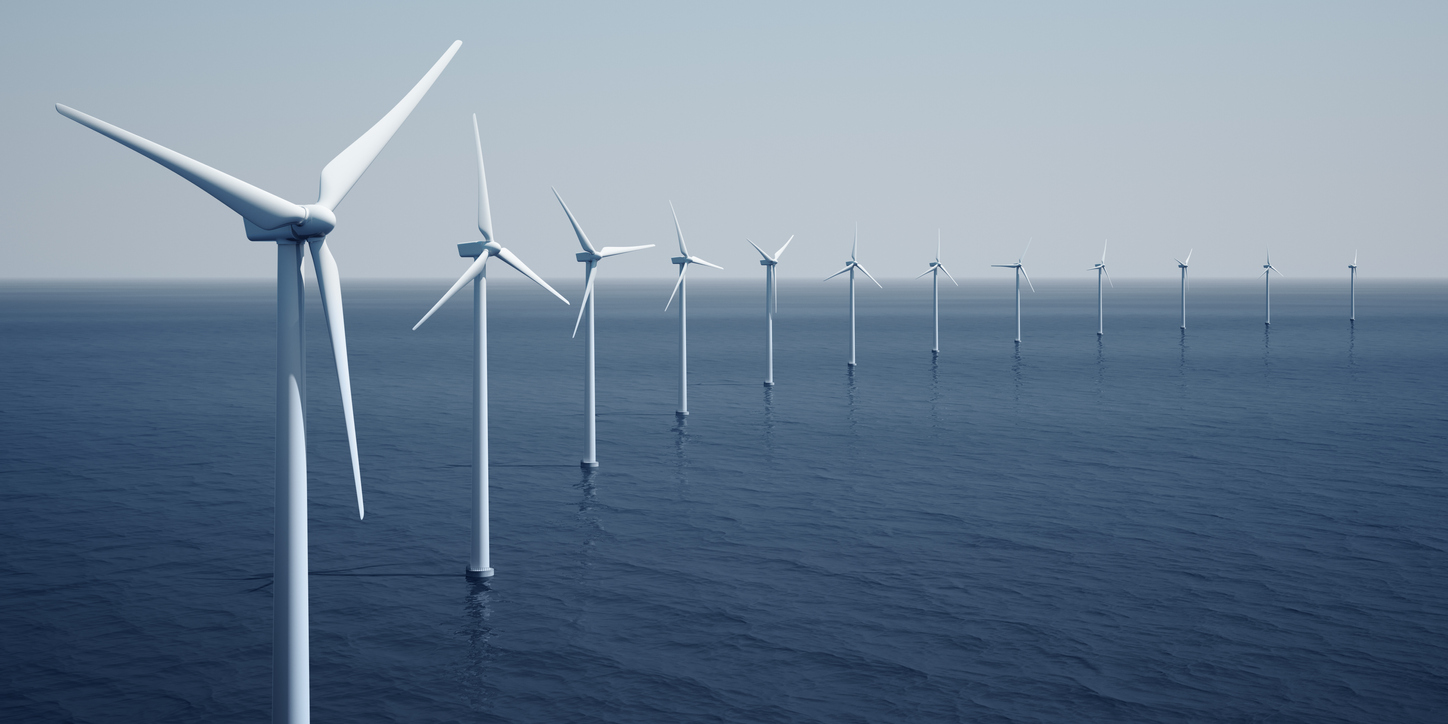2022/08/30
Japan Settles for a Slow Start in the Promotion of Offshore Wind Industry: Strategic Reformation Is Essential to Induce the Potential of Japan as a Maritime State

(The original article in Japanese was posted on August 5, 2022)
New offshore wind installations are growing rapidly worldwide. According to the latest data from the Global Wind Energy Council (GWEC), new global offshore wind energy capacity installed in 2021 was 21.1 GW (gigawatts) or a three-fold increase from the previous year, which is equivalent to the energy capacity of 20 nuclear power plants. With the new installations, the annual cumulative volume of global capacity reached 56 GW as of the end of 2021. In addition, the volume of annual offshore wind installations is expected to increase to 54.9 GW in 2031, or a 2.6-fold increase from 2021 and the percentage of offshore wind in the total wind-power generation will grow from 21% in 2021 to 30% in 2031. Besides, the technically challenging floating offshore wind has reportedly passed the demonstration stage and moved to pre-commercial stage.
China led the market in 2021 for the fourth year in a row, contributing 80% of new offshore installations. Currently, a total of 23 GW capacity of offshore wind projects is under construction globally, where European countries account for roughly half of the market share. However, by country, China ranks first holding over 30% share, followed by the UK, Netherlands, Taiwan, France, and Germany. In fact, China has drastically overtaken European countries even though they constantly took a lead in offshore wind installations. Also, Chinese companies such as Shanghai Electric Wind Power Group seized upper positions in the global wind turbine market share.
Surrounded by the sea, Japan has the great potential for the offshore wind energy development. The Japanese government acknowledges that offshore wind is the "trump card to make utilize renewable energy as the major power source.” Besides, it is also important from the perspective of Japan's next-generation growth strategy, as the offshore wind power system is composed of a large number of parts and components, which consequently involves extremely broad-based supporting industries. However, Japan’s offshore wind power represents only 0.1% of the global share of total cumulative installed capacity, which is incomparably less than China's 47%, the U.K.'s 22%, and Germany's 14% of the global share respectively. As a result, development of the new industry has also lagged behind. On the contrary, major manufacturers such as Mitsubishi Heavy Industries, Ltd. and Hitachi, Ltd. have already withdrawn from the offshore wind power generation market. Incidentally, the first round of the public auctions for offshore wind power projects in the three sea areas in Akita, northern Japan, and Chiba, near Tokyo, were all won by consortia led by the Mitsubishi Corporation at the end of last year. It is noticeable that the Mitsubishi consortia will use the General Electric Company manufactured wind turbines. Likewise, overseas manufacturers dominate the market for the core components such as wind turbines, nacelles (generator house), and towers.
Under the current circumstances described above, criticism of the public bidding rules came out continually, and the criteria for evaluation score were largely revised. The revision includes the following key points: importance of the price factor is decreased; faster execution of operation is emphasized; and some restrictions are imposed on awarding of contracts in case of multiple bidding auctions simultaneously offered for the multiple sea areas. Anyway, business units of publicly offered projects in Japan are generally small. If the amount of power to be generated is also restricted, advantage of scale will not be expected. In addition, the factor that makes a difference in early operation start depends on the presentation skills during the preceding process such as preparing environmental assessment and facilitating close coordination with local involved parties. The "new restrictions" will work effectively to discourage foreign companies from participating in the bidding even though they precede Japanese companies in terms of technology and price competitiveness. But at the same time, I could hardly say that these advantageous measures will support Japanese companies to acquire fully competitive strength to deal equally with global companies, and resultingly the gap between Japan and the rest of the world will become wider. After all, the development of related industries will also fall behind. In order to expand markets, strengthen global competitiveness, and realize a decarbonized society as it was pledged, fair and transparent rules based on the premise of an "open market” are honestly desired.
This Week's Focus, August 5
Takashi Mizukoshi, the President